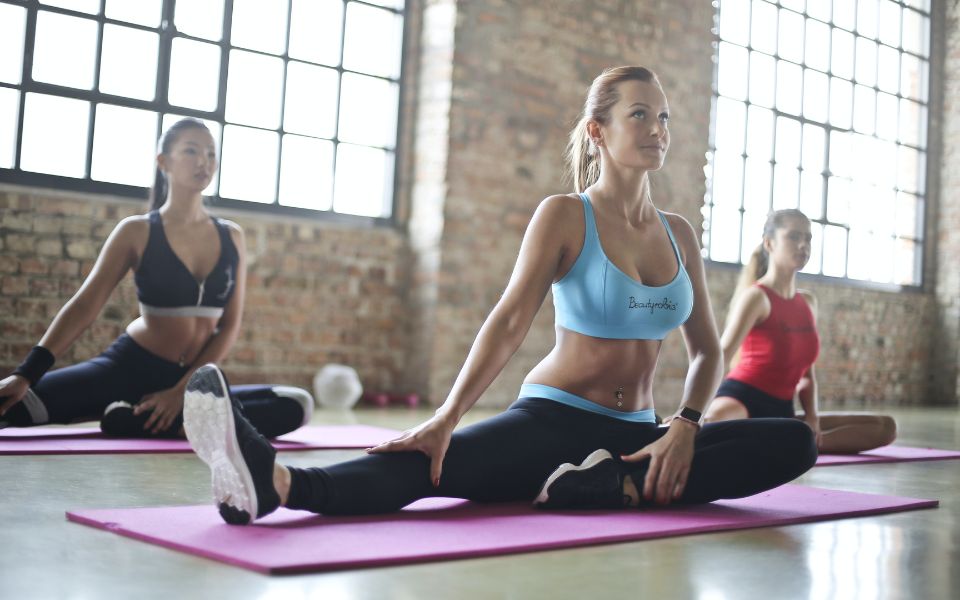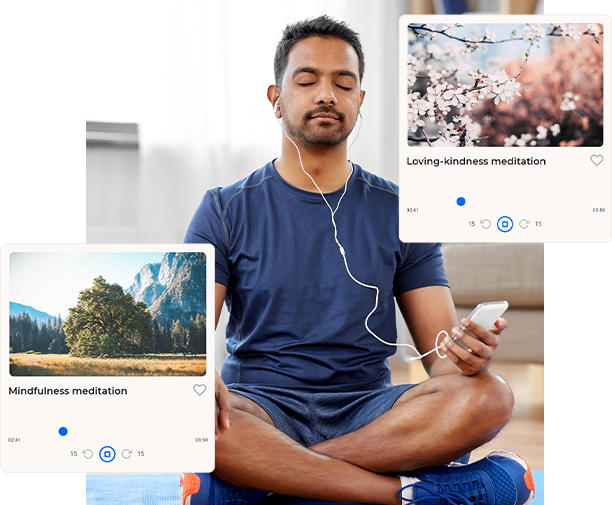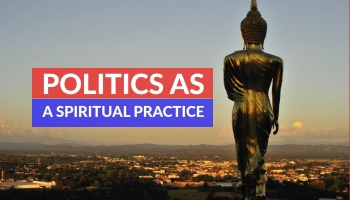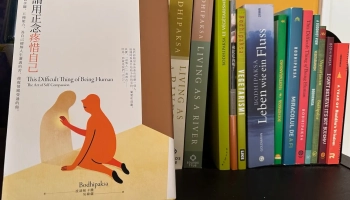
[ad_1]
Have you ever felt like you’re on autopilot as you go through the day? You may feel like you aren’t even present while walking to the nearest bus station or stretching before an important task. Some people find ignorance is bliss, but it can be unhealthy to view life from such a lens. What is mindfulness movement meditation and how can it improve your daily experience?
What Is Mindfulness Movement Meditation Exactly?
Mindfulness movement meditation is performing different activities with an awareness of your body and mind. This practice centers on being present and paying attention to sensations as they happen. At the same time, mindfulness operates on having strong mental clarity.
Some people feel like they’re alone in a mental fog and physical slump, but that isn’t true at all. About 90% of Americans believe they live in a mental health crisis. Physical inactivity affected about 23.8% of the population in 2020 as well. Recognizing these areas of improvement is critical to gain motivation and achieve mindfulness movement meditation.
400+ Free Guided Meditation PracticesDeclutter The Mind will help you live more mindfully and understand your mind better with a growing library of free guided meditation practices, courses, and daily meditation practices.
The Roots of Mindfulness Movement Meditation
Mindfulness movement meditation has existed for a while and has many forms. Most programs have been adapted from Buddhist teachings to fit a Western audience, explaining the overlap between the two.
For example, secular mindfulness refers to an awareness and acceptance of your innermost thoughts. It intersects with Samma Sati — an element of the Noble Eightfold Path that believes in having a pure and comprehensive understanding of what’s happening.
Former mindfulness ideologies were attached to religion, but they operate more towards the enlightenment of the self. Even the spiritual master Buddha didn’t have a specific god to attribute his wisdom to — the credit goes to his strength and will to refine himself.
Mindfulness movement meditation maintains the same core idea of helping oneself achieve enlightenment. The essence of the practice is vital in today’s society. Many look towards different elements to get a hold of themselves, but your mind and body are the most integral to understanding and growth.
Understanding the Impact of Complete Mindfulness
What is mindfulness movement meditation useful for? Can it create a lasting effect on a person? The truth is there are a variety of benefits to complete mindfulness, such as:
- Focus: Movement mindfulness can improve one’s focus. Rather than going through life in a haze, you get to see and feel everything from a better perspective. There’s also a newfound desire to pay attention.
- Moods: Many people associate mindfulness with less depression and panic. Using your body to exercise and channel negative energy can also be a great way to keep your well-being intact.
- Movement: People also experience an improvement in their everyday movement with mindfulness. Imagine having a spring in your step as you go through each day instead of slouching and dragging your feet.
- Improved fitness: Develop a positive sense of vigor during workouts. Mindfulness movement meditation can also help you achieve specific fitness goals and set new ones. Acknowledge work plateaus and correct them to keep progressing.
- Pain management: Mindfulness movement meditation can make you aware of any pain you feel. So many are used to pushing aside such sensations, but desensitizing yourself can do more harm than good. Be aware of the pain and act.
Carrying Out Mindfulness Movement Meditation
Mindfulness movement meditation takes several steps. Knowing and enacting them are essential to achieve the best results for your body and mind.
1. Breathing Exercises

Breathing exercises are the foundation for almost any mindfulness-based program. Start by observing your breathwork while at rest, then take a deep breath and count to five before exhaling. Do a few repetitions of this to center yourself.
Next is to notice your breathing when you’re finally moving. Some people find themselves short of breath because they forget about composing themselves, so remember to inhale and exhale while you’re in motion. It’s also imperative to practice this when cooling down.
2. Mental Concentration
Once you have your breathing in check, the next step is to work on your mental concentration. There are advantages to letting your mind wander — such as sparking creativity and imagination — but you should also be able to reel yourself into contemplating a topic.
As you move, direct your attention towards something. You can focus on a particular object, like counting the benches you pass by. Some may also benefit from having a specific thought or mantra they repeat throughout their meditative movement.
3. Calming Mind

Mindfulness movement meditation should be a calming experience. If you notice your mind going through some turmoil, clear your head. It’s recommended to practice relaxation techniques for about 10 to 20 minutes every day.
Start by acknowledging the problem occupying your head before allowing yourself to release it. Some people find visualization to be helpful, so try forming your negative thoughts into a ball in your hands. Imagine letting it go and how good you feel when it floats away.
4. Introspection
A calm mind can open up a world of introspection. Why are your thoughts the way they are? How do you cope with the mental load of each day? Is there anything you want to change about your emotion-management strategies?
Some people resist observing themselves because self-awareness means confronting everything about yourself — the good and the bad. A step in this direction can allow you to be more at peace with yourself while exploring mindfulness movement meditation.
5. Body Awareness
So many people have a disconnect with their physique, so extend mindfulness to your body and analyze your capabilities. Learn about what your body can and can’t do regarding exercises, and pay attention when you experience an intense stretch or pain.
Accommodating your body can create a stronger connection between your mind and figure. This imbalance can be unhealthy since you have to cope with your thoughts by themselves and hinder yourself from taking up space. Accept that shortcoming and start a shift.
6. Tension Release

Once you’ve recalibrated your body and mind, the next step is to release tension. Mindfulness movement meditation revolves around various everyday actions, but picking out a single activity can help remove mental and physical stress in the long run.
Pressure tends to build up over time, so get it out of the way with exercises like:
- Walking: Walking meditation is great for practicing mindful movement because you do it daily — you’ll find yourself walking from one room to another or when running errands. In those moments, channel your attention to your steps. You can also focus on the change of scenery.
- Stretching: Stretching is a low-effort way of practicing mindful movement. Stretch your arms to the sky and release your shoulders and back stiffness. You can also do a few lunges to stretch the legs or move your neck from side to side. Stretching your whole body to remove tension mindfully can bring relief.
- Yoga: Yoga is inherently mindful since you’re moving from stance to stance while taking deep breaths and keeping your motion in check. Grab a mat and try out different poses — if you’re a beginner, simple ones like the downward-facing dog and mountain should work.
- Tai Chi: Tai chi is a gentle series of martial art movements. You’ll slowly build muscle strength and mental fortitude while meditating, and work on your posture as you practice different poses and hand gestures.
- Qigong: Qigong is similar to tai chi since it gently works out the body. However, it focuses on preventing energy depletion and refining one’s vital energy. Improve your breathwork as you flow through a routine.
7. Lifestyle Habits
One final stage in mindfulness movement meditation is building a lifestyle of these different habits. Having some days where you falter from the practice is understandable since life gets busy, but remember to pick up where you left off afterward.
Practicing consistency can truly enlighten your mind and body. Once you’re accustomed to these meditative practices and movements, you can keep your progress going and stay fulfilled.
Tips to Help Achieve Mindfulness
Mindfulness movement meditation can allow you to become more present throughout each day of your life. Plus, some techniques can make the process smoother.
1. Know What Motivates You
Many fall short of mindfulness and meditative movement because they don’t have a direct goal to work towards. It isn’t necessary to set an objective, but understanding what motivates you can fuel you to progress further.
Here are some examples:
- Strengthen the body: Some people feel like their movement is stiff or they can find better balance. Strengthening the body through mindful movement can help you work out while keeping your eyes on the prize. Focus on building your endurance and adding power to each step and action.
- Getting comfortable in one’s skin: Others loathe moving because they dislike their body image. About 50% of Americans feel pressured to attain a certain body type. Mindfulness movement meditation won’t completely transform your figure, but it can help you feel more happy and comfortable in your skin.
- Fortify the mind: Meditative movement means being present throughout the whole day. It can be easy to retreat into your head when you feel discouraged by multiple factors throughout life. However, creating mental fortitude and taking care of your mental health can empower you to pick yourself back up and keep moving.
- Grow as a person: Sometimes, the only motivation you need is self-improvement. A disconnect between your body and mind can be personally frustrating, so learn to challenge that zone and find joy in change.
- Improve sleep quality: Getting your body around and being conscious throughout the day can take up more energy than you think. Allow your mindfulness movement meditation to help you rest and recuperate.
2. Disconnect from Distractions
It can be hard to hone your mind and body awareness if you’re staring at your phone or focused on a different task. Take a screen break and focus on yourself, putting your devices in a separate room or leaving them indoors when going outside.
If you’ve improved your self-control and prioritized mindfulness, you can leave the distractions in the same room. Take note of how you mentally and physically react towards the object, breathe, and shift that focus towards yourself.
3. Use Mindfulness Tools

Mindfulness doesn’t come quickly to everyone, but there are tools you can use to move your progress along. Some can even elevate the experience of going through your meditative movements.
The following tools might do the trick for you:
- Aromatherapy: Use some essential oils next time you’re doing an exercise routine. Aromatherapy can be therapeutic for anxiety, aiding a person’s mindfulness meditation. Remember to regulate how much you’re putting on to avoid breathing in perfume.
- Music: What you listen to can truly set the tone for your meditative movement, especially when you’re a musically inclined person. Seek a playlist to boost your mood — classical music or uplifting beats can be great to focus on.
- Nature: Being in nature can improve your mindfulness movement meditation. There are so many sensations and scenery that can help recenter your thoughts. Plus, the outdoor air can be calm and refreshing.
- Mindfulness apps: Meditation apps on your phone can provide routines to improve mindful workouts. The affirmations and notifications can be your biggest cheerleaders on low-energy days.
- Journals: Want to record or share your meditative movement musings or progress? Keep a journal to document your journey, writing down the exercises you do and thoughts that came up during the process. You can also track your mood.
4. Talk Yourself Into Intervals
Some days, you don’t feel like moving or meditating. It’s natural to take a break when you’re too tired, but if it’s out of boredom, talk yourself into doing at least 10 minutes. A short period of mindfulness movement meditation is better than nothing, so pat yourself on the back afterward for trying your best.
Certain people may berate themselves for not immediately getting into the groove of mindful movement. If that sounds like you, hit pause and provide yourself with some kindness instead.
Invest in Mindfulness Movement Meditation
Mindfulness movement meditation is a worthwhile endeavor to channel your energy into. You get to recenter your body and mind to experience moments in life as they happen. When you work on yourself, you could watch your zest for life return
—
Beth is the mental health editor at Body+Mind. She has 5+ years of experience writing about behavioral health, specifically mindfulness-based cognitive therapy. Beth also writes about the power of human design to reveal our potential. You can find her on Twitter @bodymindmag. Subscribe to Body+Mind for more posts by Beth Rush.
[ad_2]
Source link






